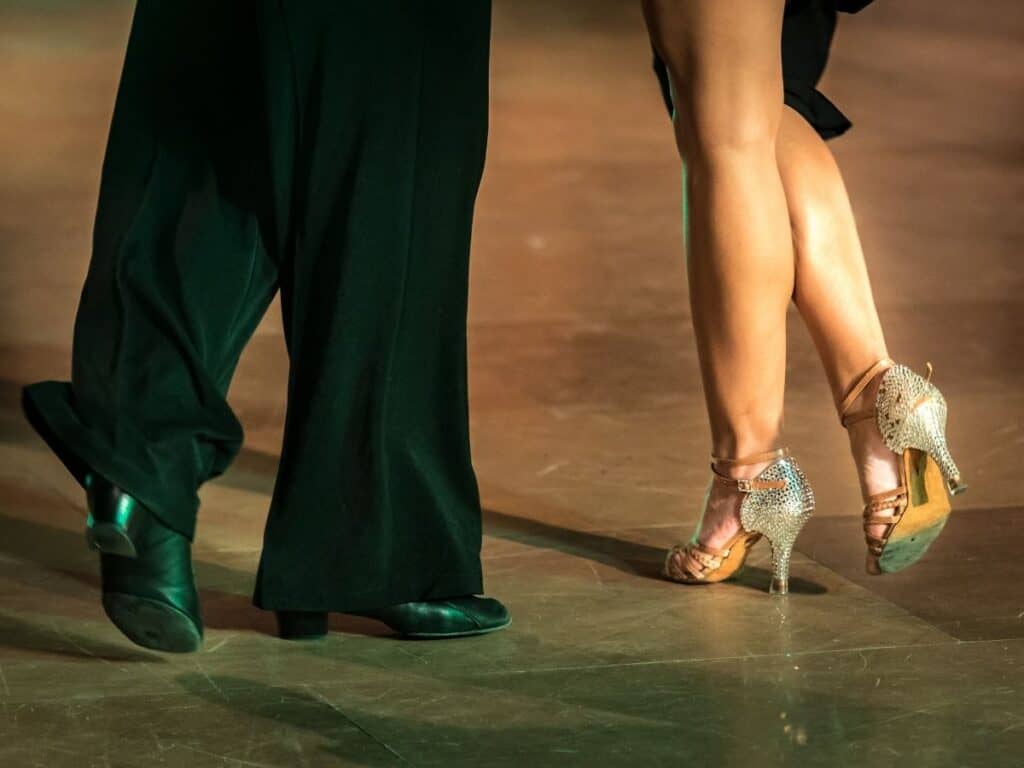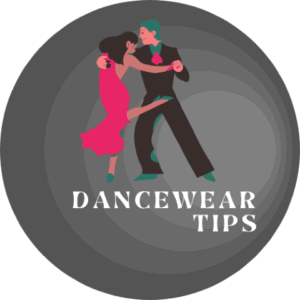
There are many Latin dance styles, and they are all unique and beautiful in their ways. It is not uncommon that people can’t identify the differences between some dance styles. In this article, I will shed some light and address the main differences between Salsa and Cumbia.
What is the difference between Salsa and Cumbia? Cumbia is a bit slower than Salsa dance. It is easier to find the beat in Cumbia music. Cumbia is a more relaxed dance style, but Salsa is more popular across the World.
However, Cumbia and Salsa have many similarities. As with Salsa, the lead steps back with the left leg, and the follower steps back with the right leg. Also, the rhythm and step counts are the same. It goes quick-quick-slow and quick-quick-slow and 1-2-3 pause, 4-5-7 pause.
One of my dance instructors has taught us to combine basic Salsa moves with basic Cumbia moves. We have danced basic Salsa moves and quickly transitioned into basic Cumbia moves. That was a great experience.
What Is Cumbia Dance?
Cumbia is a music and dance style that originates from the Columbian Caribbean coastal town of San Basilio.
Cumbia music is often called the mother of all Latin music because it influenced other Latin musical genres. Cumbia music has similarities with Salsa and music.
It is possible to dance Cumbia to Salsa music but not other way around because beats are too quick and pauses are too long to feel natural dancing Salsa to Cumbia music.
Cumbia dance and music are very popular worldwide but not as much as Salsa is.
The basic steps in Cumbia dancing are the back-break basic. A “wind-up” motion that characterizes Cumbia is often danced in a circular pattern sometimes called the Columbian or Cumbia circle basic.
Cumbia is closely related to Swing dance because many similar steps are found in these dance styles.
Basic Cumbia steps go quick-quick-slow and quick-quick-slow. The rhythm in Cumbia dance is the same as with Salsa. Counts are also the same as with Salsa by pausing on 4 and 8 (1-2-3 pause and 5-6-7 pause). The basic side-to-side steps are very similar to Salsa steps.
When dancing with a partner, the lead goes back with the left leg, and the follower goes back with the right leg.
Here is an excellent example of the basic Cumbia dance steps presented by “How 2 Dance”:
Is Cumbia Hard To Learn?
Cumbia is relatively easy to learn. The basics steps are very simple, and you can learn them very quickly. If you are familiar with Salsa dance, you won’t have any issues learning Cumbia quickly.
Cumbia Music
Cumbia music originated in Columbia in 1800. Cumbia music is very popular in South America, Central America, and Mexico. Modern cumbia music emphasizes a variety of musical instruments like piano, bongo drums, and others. The exact sound of cumbia music varies from country to country due to regional differences.
Cumbia music is highly influenced by Spanish, African, and Native American culture and music.
Traditional cumbia music instruments include flutes, drums, and other wind instruments, ouds, guitars, and percussion instruments, like the maracas. Cumbia music has continued to develop over time, adding new instruments such as trumpets, Caja drums, clarinets, saxophones, synthesizers, and trombones.
What Is Salsa Dance?
Salsa dance is a popular Latin dance that many people across the World enjoy. Salsa dance is very energetic, fun, and sensual. It is one of the most popular Latin dances in the World.
Many salsa lovers are opening doors to new opportunities for social life.
Salsa is a Latin dance that originated in the 1960s and combines Cuban, Dominican, and Puerto Rican dances. It was mainly developed by Dominicans and Puerto Ricans in New York between the ’60s and ’70s.
In salsa dancing, a dancer shifts their weight by moving into the middle to have 50/50 weight. The upper body remains almost unaffected by those changes. The main movements are in eight steps that cause hips to move and adding more sensuality.
The arms are used by “lead” to indicate to “follow” to which direction she should go. It could be either an open or closed position.
The open position requires the dancers to hold one or both hands. This is especially very important for moves that involve turns, putting arms behind the back, or moving around each other.
In the closed position, the lead puts the right hand on the “follow’s” back, where the “follow” puts the left hand on the leader’s shoulder.
Salsa tempo is between 150 bpm to 250 bpm; therefore, the pace is very fast. However, only professional Salsa dancers can dance at this pace. Beginners and people who want to learn Dance Salsa do not need to dance at this speed for social occasions.
Salsa composition is based around clave rhythm that has four types. The key instrument that gives the core groove to salsa music is the clave. Salsa songs are played with two wooden sticks called claves that are hit together.
A great thing about Salsa dance is that it will continue to change and grow as people add new techniques, steps, and individual styles that others will love, too.
There are many different Salsa dance styles. Those Salsa dance styles are the following:
- Afro-Latino Salsa Style
- Columbian or Cali Salsa Style
- Cuban Or Casino Salsa Style
- Miami Salsa Style
- La Salsa Style
- New York Salsa Style
To find out more about each dance style and watch dance videos of those styles, check out my latest article, “What Are Different Salsa Dance Styles.”
Here is an excellent example of how to dance Salsa (a beginner’s guide), presented by “Passion 4 Dance.”
Final Words
Without a doubt, Salsa and Cumbia are fun and energetic dance styles. Many people think these dance styles are identical because of the many similarities in the basic step patterns, step counts, and rhythm. As I covered in this article, they are different and unique in so many ways. Whatever dance style you decide to learn, you will not regret it.

